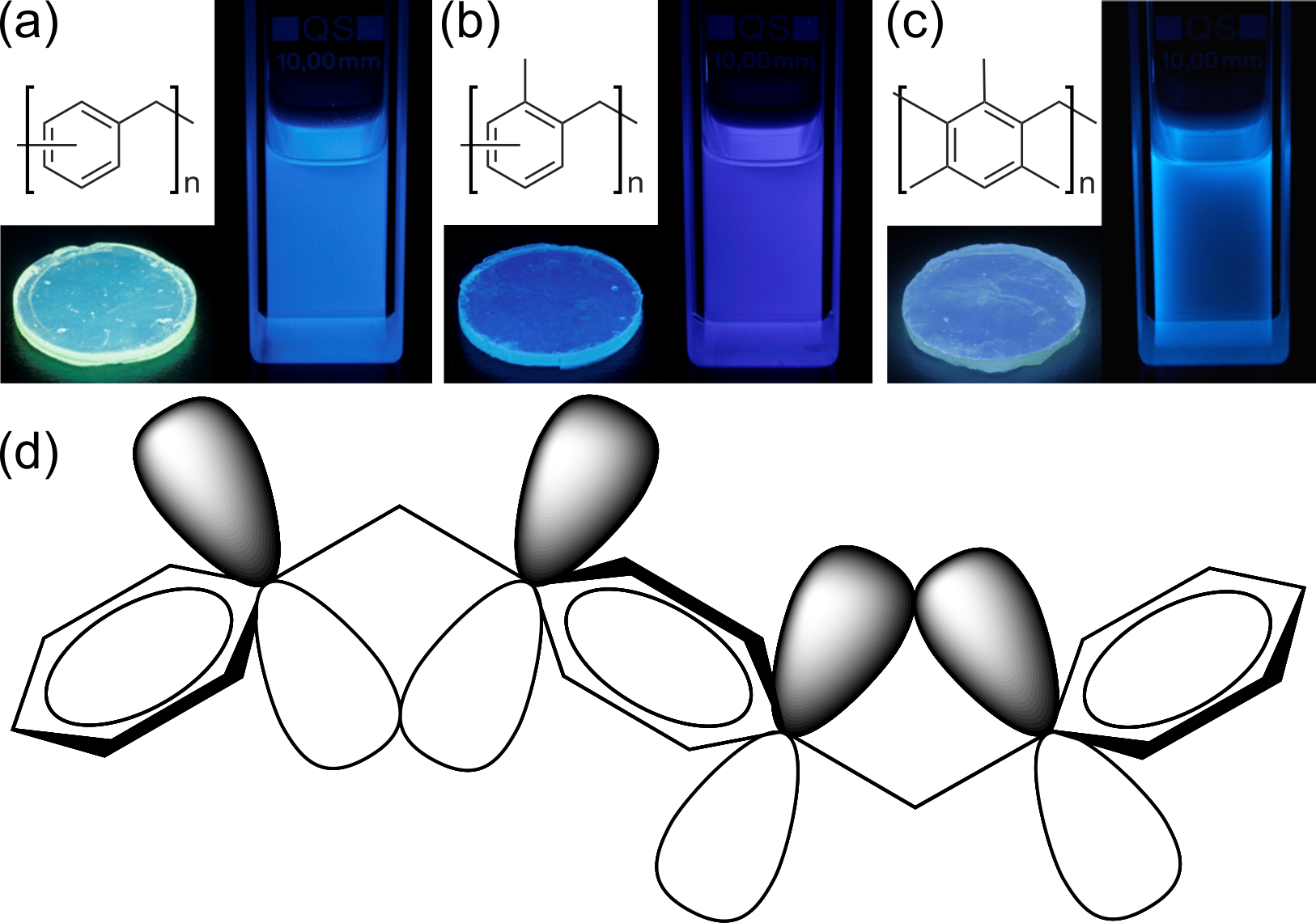Homoconjugation in Poly(Phenylene Methylene)s
Poly(phenylene methylene) (PPM) exhibits pronounced blue fluorescence in solution as well as in solid-state (Fig. 1(a)), despite its non-conjugated nature along the backbone since the methylene groups interrupt π-conjugation between the phenylene groups. We extensively used optical spectroscopy to explore the characteristics of PPM, namely absorption between 350 nm and 450 nm with the corresponding photoluminescence in the 400-550 nm spectral region [1]. Given the evidence, π-stacking and aggregation, as well as the formation of fluorescent impurities, are excluded as the probable origins of the optical properties. Instead we have shown that its unexpected fluorescence originates in a phenomenon called homoconjugation, specifically the π-orbital overlap of adjacent phenylene groups across the non-conjugating methylene group mediated by particular chain conformations (cf. Fig. 1(d)) [2]. To further confirm the generality of the spectroscopic properties of PPM, two derivatives poly(2-methylphenylene methylene) and poly(2,4,6-trimethylphenylene methylene) were synthesized and found to exhibit comparable spectroscopic properties (Fig. 1(b-c)). Notably, PPM features a relatively high photoluminescence quantum efficiency (41%) and a substantially longer photoluminescence lifetime (>8 ns) in the solid state than other typically blue emitting conjugated polymers [3]. This first demonstration of fluorescent properties in macromolecules enabled by homoconjugation along the backbone opens new strategies for the design of next-generation light-emitting polymers.

Fig. 1. Chemical structures and photographs taken under UV-light (~365 nm) illumination of polymer plaques and polymer solutions in chloroform of (a) poly(phenylene methylene), (b) poly(2-methylphenylene methylene) and (c) poly(2,4,6-trimethylphenylene methylene). (d) Schematic representation of homoconjugation via π-orbital interaction in a PPM chain segment.
[1] A. Braendle, A. Perevedentsev, N. J. Cheetham, P. N. Stavrinou, J. A. Schachner, N. C. Mösch-Zanetti, M. Niederberger, W. R. Caseri, J. Polym. Sci. Part B Polym. Phys, 2017, 55, 707-720.
[2] P. Muller, Pure Appl. Chem. 1994, 66, 1077–1184.
[3] A. K. Bansal, A. Ruseckas, P. E. Shaw, I. D. W. Samuel, J. Phys. Chem. C, 2010, 114, 17864-17867.